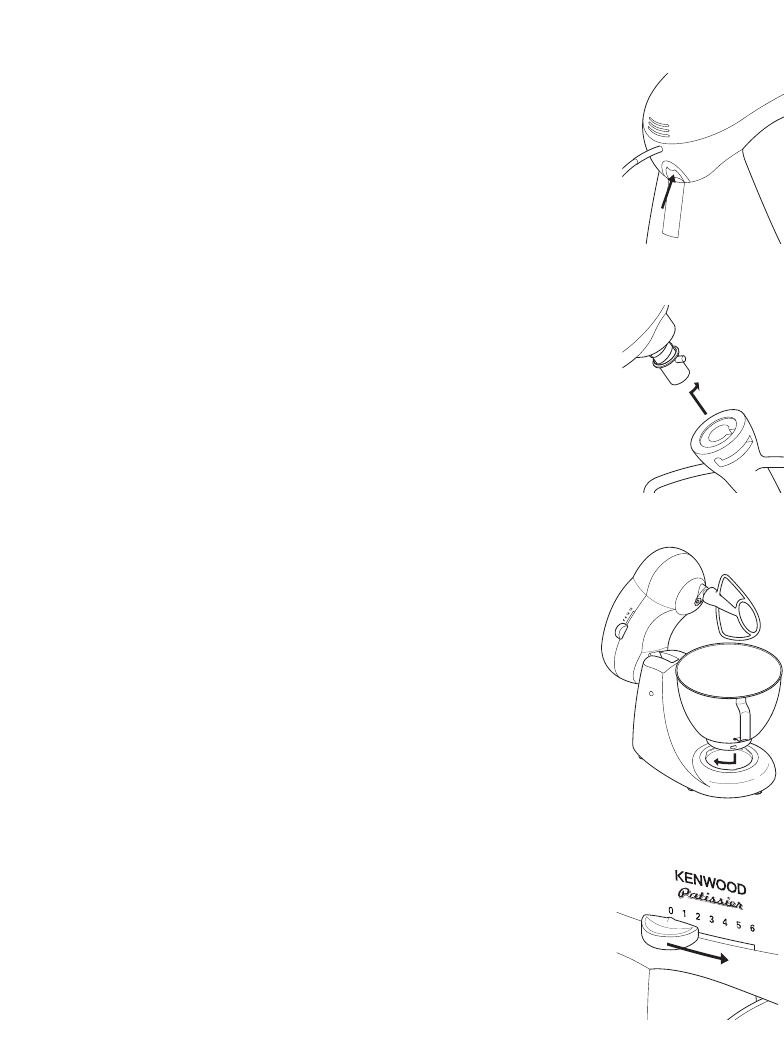
the mixer
the mixing tools and some of their uses
beater
●
For making cakes, biscuits, pastry, icing, fillings, éclairs and mashed
potato.
flexible beater
●
For creaming and mixing soft ingredients. It is not to be used with
heavy recipes such as dough or hard ingredients.
whisk
●
For eggs, cream, batters, fatless sponges, meringues, cheesecakes,
mousses, soufflés. Don’t use the whisk for heavy mixtures (eg
creaming fat and sugar) - you could damage it.
dough hook
●
For yeast mixtures.
to use your mixer
1 Push up on the head release lever at the back of the appliance ᕡ and
at the same time lift the head until it locks in the raised position.
to insert a tool 2 Line the pin on the shaft with the slot on the inside of the tool, push
up and turn clockwise to lock ᕢ.
3 Fit the bowl onto the base, press down and turn clockwise to
lock ᕣ.
4 Push up on the head release lever and at the same time lower the mixer
head ᕡ.
5 Switch on and move the speed switch to the desired setting ᕤ.
to remove a tool 6 Push up, turn anti-clockwise and pull off.
hints
●
Switch off and scrape the bowl with a spatula when necessary.
●
Eggs at room temperature are best for whisking.
●
Before whisking egg whites, make sure there’s no grease or egg yolk
on the whisk or bowl.
●
Use cold ingredients for pastry unless your recipe states otherwise.
●
When creaming fat and sugar for cake mixes, always use the fat at
room temperature or soften it first.
●
Your mixer has been fitted with ‘soft start’ feature to minimise
spillage. However if the machine is switched on with a heavy
mixture in the bowl such as bread dough, you may notice that the
mixer takes a few seconds to reach the selected speed.
points for bread making
important
●
Never exceed the maximum capacities on page 5 - you will overload
the machine.
●
To protect the life of the machine always allow a rest of 20 minutes
between loads.
●
Some movement of the mixer head is normal. If you hear the
machine labouring, switch off, remove half the dough and do
each half separately.
●
The ingredients mix best if you put the liquid in first.
●
At intervals stop the machine and scrape the mixture off the dough
hook.
●
Different batches of flour vary considerably in the quantities of liquid
required and the stickiness of the dough can have a marked effect
on the load imposed on the machine. You are advised to keep the
machine under observation whilst the dough is being mixed; the
operation should take no longer than 5 minutes.
ᕡ
ᕢ
ᕣ
4
ᕤ


















